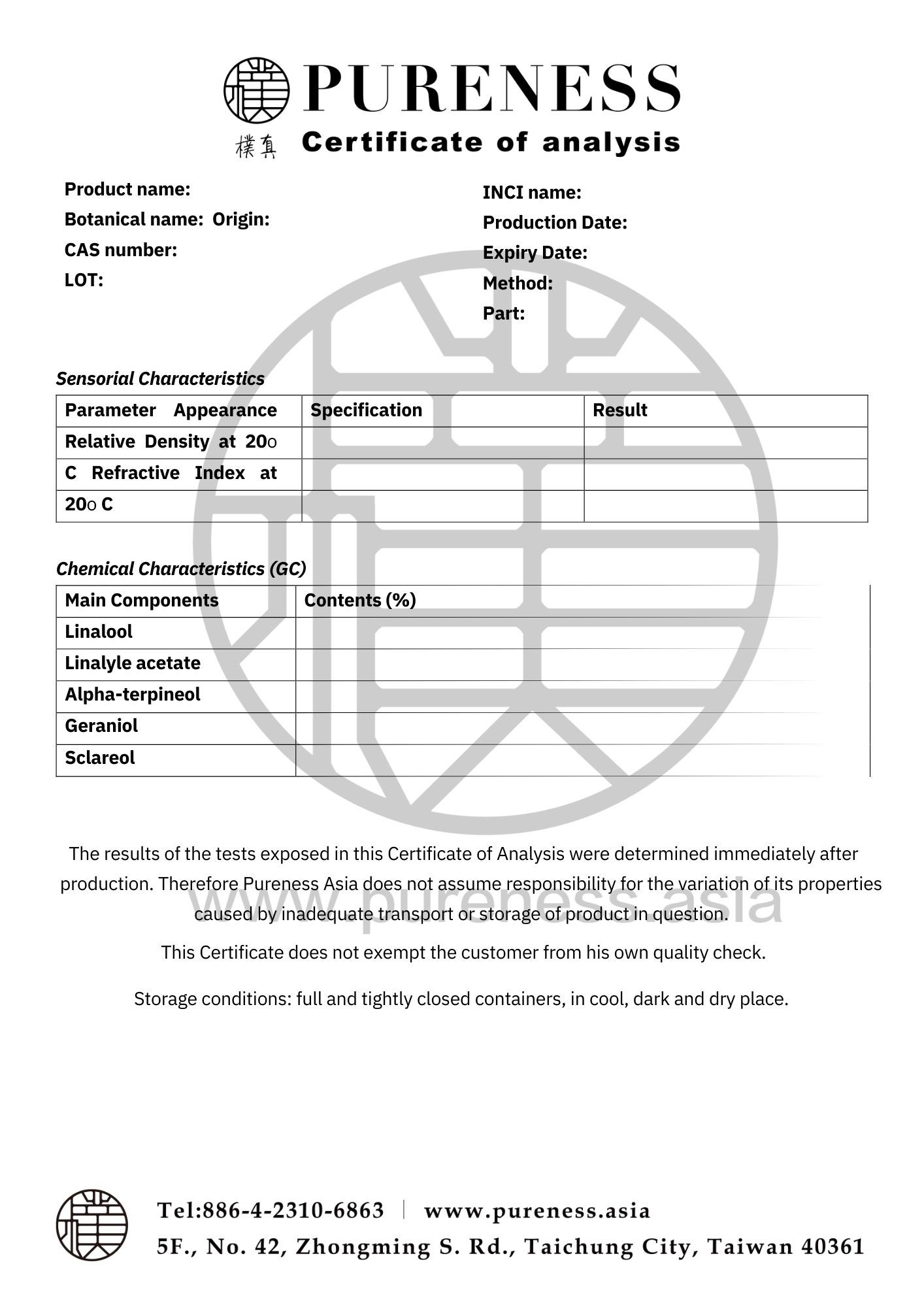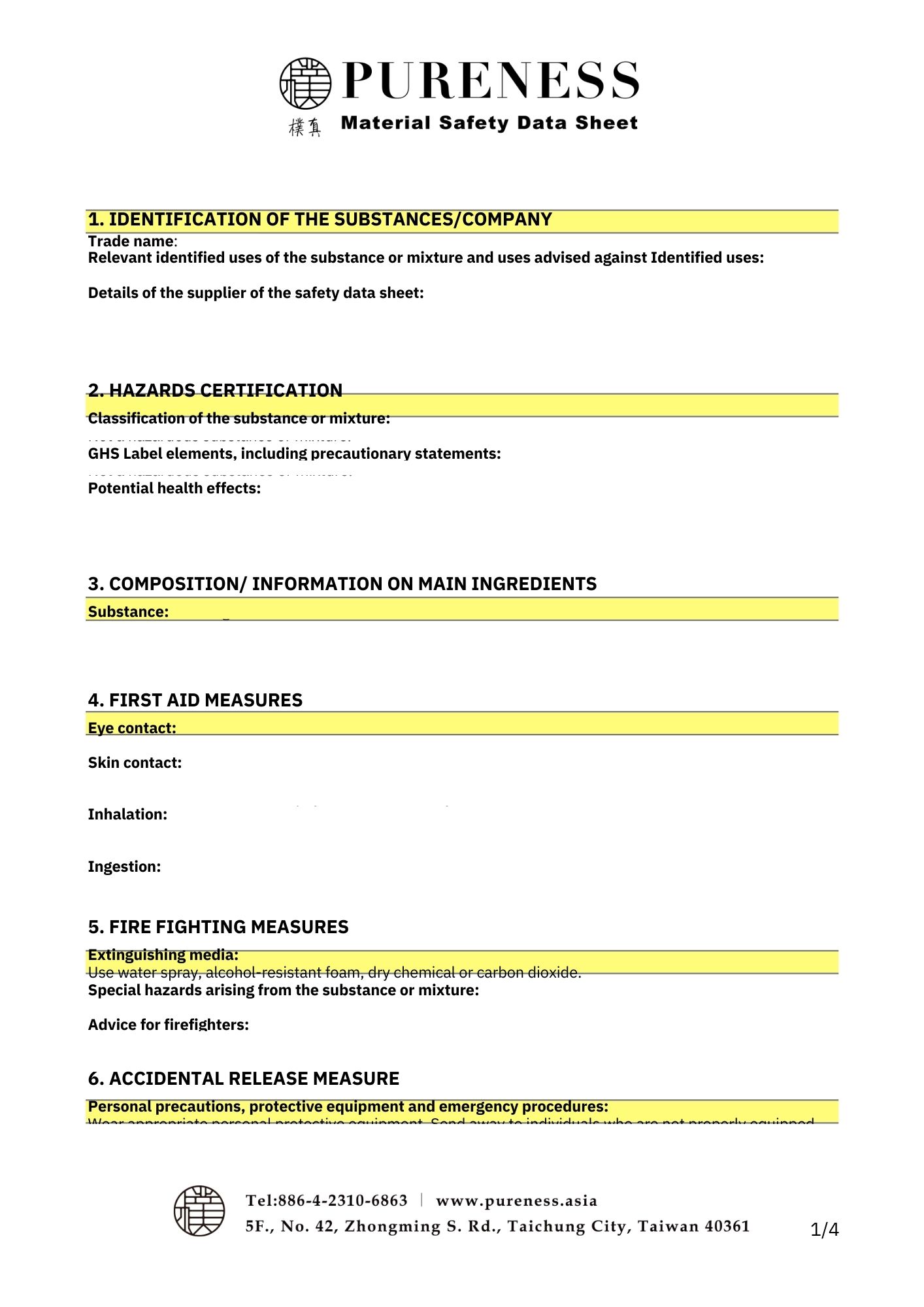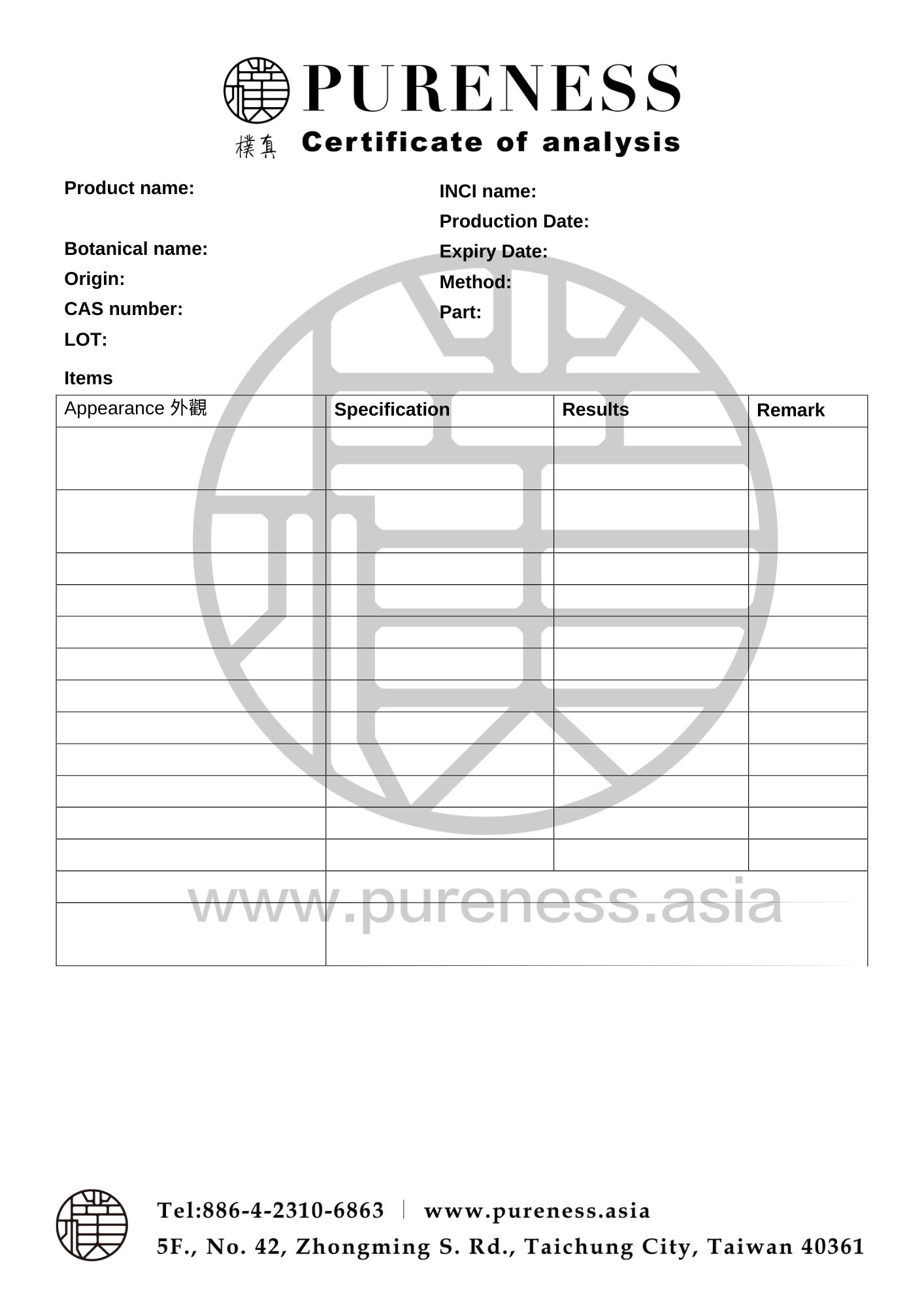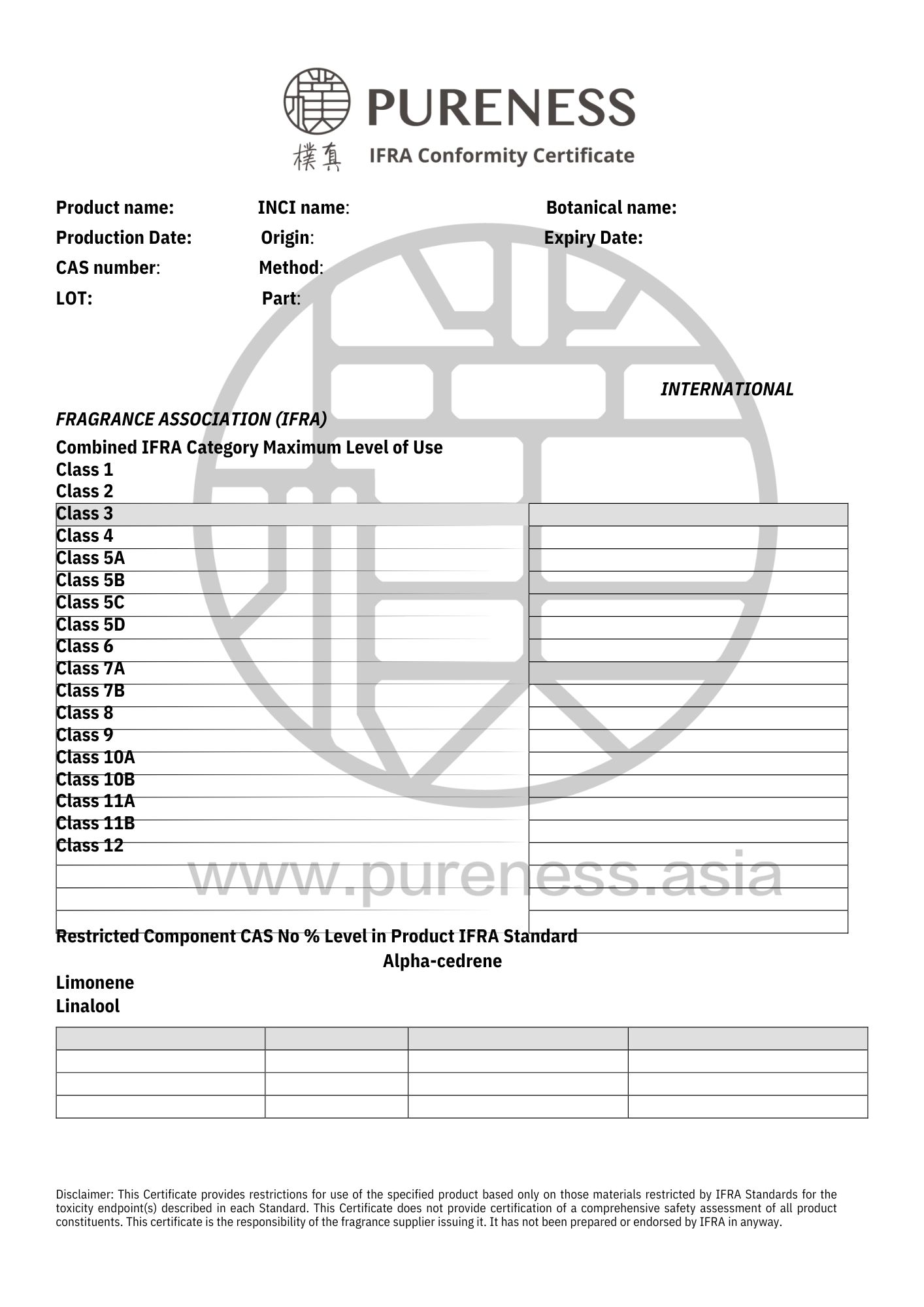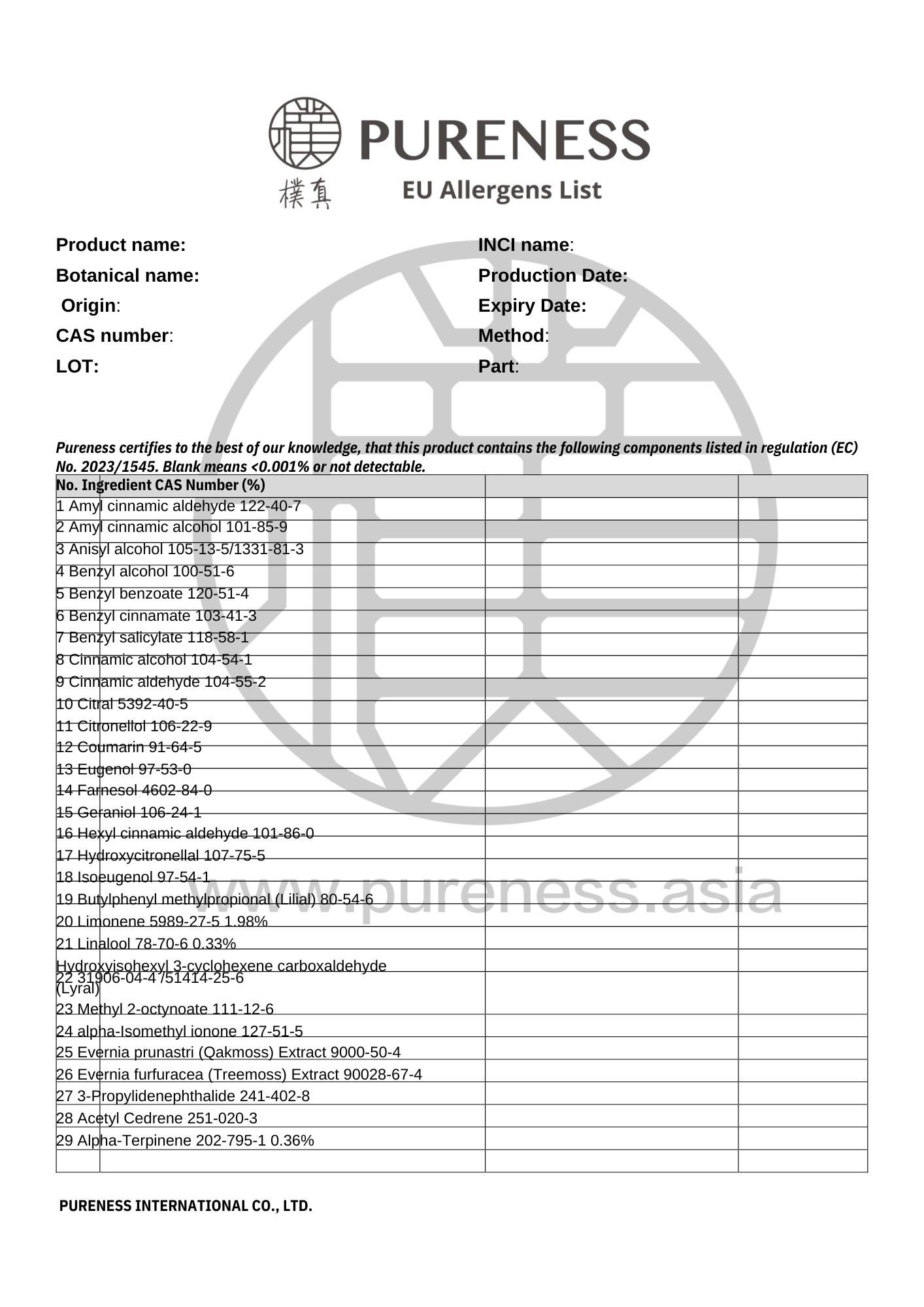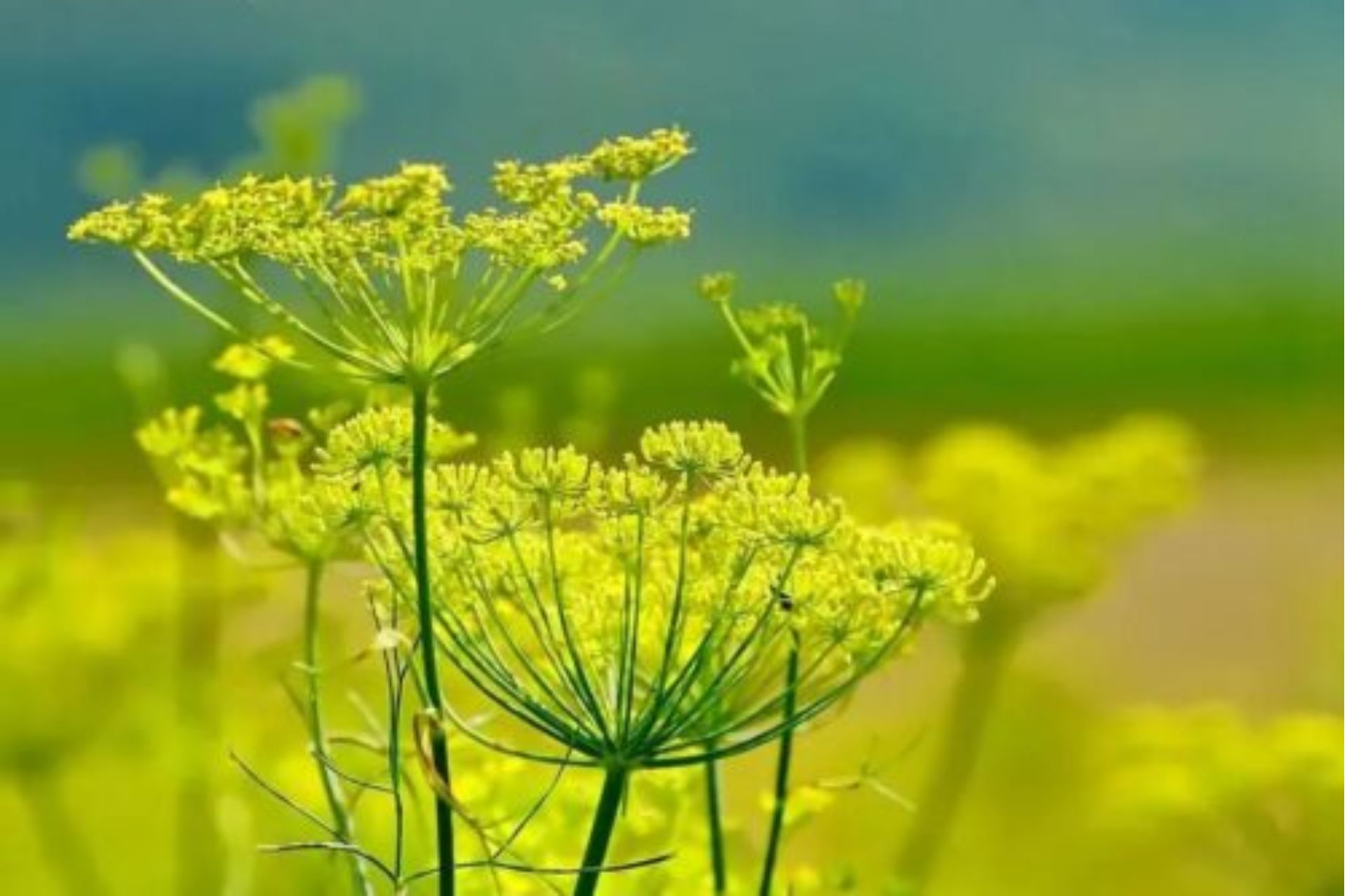
甜茴香 Fennel sweet
拉丁學名|Foeniculum vulgare
主要產地|西班牙
原料分類|香料系列
原料規格|500g-25kg 詳情請洽業務
萃取部位|種子
萃取方式|蒸餾
植物科別|繖形科
植物氣味|帶點辛辣,味道有花香和草味
▎精油簡介
甜茴香Sweet Fennel原生於南歐地中海沿岸,為多年生繖形科植物,喜愛生長在陽光充足,排水良好的地區,適應環境能力強,目前已廣佈於歐洲各國、印度中國與北美。
甜茴香使用歷史悠久,古代戰士常被用來增加勇氣和力量。甜茴香也代表承諾,讓婚姻中的兩個人信守一輩子的承諾。茴香作為藥用和烹飪的歷史可追溯到古埃及時期,希臘人發現茴香可以排水,羅馬人用來幫助腸胃蠕動,還可以去除口腔異味。
除了對消化系統有幫助之外,甜茴香更是女性好朋友,因為內含反式洋茴香腦,當女性生理期或更年期不適,有很好的效用,常被用於印度婦科用藥中。
▎成分解析
|主要成分:醚類
典型甜茴香的主要成份為反式洋茴香腦(苯基醚類),約佔66%-77%。
另外含甲基醚蔞葉酚、1.8-桉油醇、α-松萜烯、檸檬烯、茴香醇、茴香酮、樟腦、洋茴香酮、呋喃香豆素等多種微量成分。
|成分1:洋茴香腦(Anethole)

▸ 稱茴香腦或丙烯基丙烯,是一種植物性類雌激素,有順式和反式。
|成分2:甲基醚蔞葉酚(Methyl chavicol )
又稱龍艾腦(Estragole),是龍艾精油主成分。與洋茴香腦是同分異構物,差別在苯丙基的雙鍵位置不同,功效上會有相似處,但氣味不同。
此成分在龍蒿精油占約 80%;熱帶羅勒精油約85%;芳香羅文莎葉精油(萃取自皮)約90%。
|原料認證
欲取得相關認證資料請 點我加入官方LINE@
▎參考文獻
- Coelho-de-Souza AN, Lahlou S, Barreto JEF, Yum MEM, Oliveira AC, Oliveira HD, Celedônio NR, Feitosa RGF, Duarte GP, Santos CF, de Albuquerque AAC, Leal-Cardoso JH. Essential oil of Croton zehntneri and its major constituent anethole display gastroprotective effect by increasing the surface mucous layer. Fundam Clin Pharmacol. 2013;27:288-298.
- Ibrahim AM, Mohamed AS, Saleh A, Mansour AS, Mohammed AD, Mohamed AY et al. Fennel “Foeniculum vulgare” treatment protects the gastric mucosa of rats against chemically-induced histological lesions. Int J Pharmacol. 2013;9:182 -189.
- Birdane FM, Cemek M, Birdane YO, Gülçin İ, Büyükokuroğlu ME. Beneficial effects of Foeniculum vulgare on ethanol-induced acute gastric mucosal injury in rats. World J Gastroenterol. 2007;13(4):607-611.
- Dhar SK. Anti-fertility activity and hormonal profile of trans-anethole in rats. Indian J Physiol Pharmacol. 1995;39:63-67.
- Minnema DJ. 90-Day subchronic dietary toxicity study of trans-anethole in mice. 1997, CHV2595- 103. Corning Hazletone Inc. Vienna, VA.
- Oktay M, Gülcin I, Küfrevioglu O. Determination of in vitro antioxidant activity of fennel (Foeniculum vulgare) seed extracts. Lebensm Wiss Technol. 2003;36:263-271.
- Astani A, Reichling J, Schnitzler P. Screening for antiviral activities of isolated compounds from essential oils. Evid Based Complement Alternat Med. 2011;253643:1-8.
- Maruzzella J, Freundlich M. Antimicrobial substances from seeds. J Am Pharm Assoc. 1959;48:356-358.
- Veselin Marinov, Stefka Valcheva-Kuzmanova. REVIEW ON THE PHARMACOLOGICAL ACTIVITIES OF ANETHOLE. Department of Preclinical and Clinical Pharmacology, Medical University of Varna
- Bernáth, J. et al. 1998. Production-biological and structural regularities of essential oil accumulation in developing fruits of fennel (Foeniculum vulgare Mill.). Budapest: UHFI Department of Medicinal Plant Production.
- Bown, D. 1995. Encyclopedia of Herbs and Their Uses. New York: DK Publishing, Inc. 283-284.
- British Herbal Pharmacopoeia (BHP). 1996. Exeter, U.K.: British Herbal Medicine Association.
- Bruneton, J. 1995. Pharmacognosy, Phytochemistry, Medicinal Plants. Paris: Lavoisier Publishing.
- Deutsches Arzneibuch, 10th ed. (DAB 10). 1991. (With subsequent supplements through 1996.) Stuttgart: Deutscher Apotheker Verlag.
- ESCOP. 1997. 'Foeniculi aetheroleum' and 'Foeniculi fructus.' Monographs on the Medicinal Uses of Plant Drugs. Exeter, U.K.: European Scientific Cooperative on Phytotherapy.
- Europäisches Arzneibuch, 3rd ed. (Ph.Eur.3). 1997. Stuttgart: Deutscher Apotheker Verlag. 939-941.
- Grieve, M. 1979. A Modern Herbal. New York: Dover Publications, Inc.
- Karnick, C.R. 1994. Pharmacopoeial Standards of Herbal Plants, Vols. 12. Delhi: Sri Satguru Publications. Vol. 1:139141; Vol. 2:71.
- Lange, D. and U. Schippmann. 1997. Trade Survey of Medicinal Plants in GermanyA Contribution to International Plant Species Conservation. Bonn: Bundesamt für Naturschutz. 32-33.
- Leung, A.Y. and S. Foster. 1996. Encyclopedia of Common Natural Ingredients Used in Food, Drugs, and Cosmetics, 2nd ed. New York: John Wiley & Sons, Inc.
- Nadkarni, K.M. 1976. Indian Materia Medica. Bombay: Popular Prakashan. 557-559.
- Ph.Eur.3. See Europäisches Arzneibuch.
- Österreichisches Arzneibuch, Vols. 12, 1st suppl. ( AB). 1981-1983. Wien: Verlag der Österreichischen Staatsdruckerei.
- Tanira, M.O.M. et al. 1996. Pharmacological and toxicological investigations on Foeniculum vulgare dried fruit extract in experimental animals. Phytother Res 10:33-36.
- Tu, G. (ed.). 1992. Pharmacopoeia of the People's Republic of China (English Edition 1992). Beijing: Guangdong Science and Technology Press. 70.
- Wichtl, M. and N.G. Bisset (eds.). 1994. Herbal Drugs and Phytopharmaceuticals. Stuttgart: Medpharm Scientific Publishers.
|部分圖片來自網路,若有侵權請聯繫刪除|
